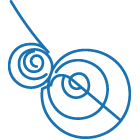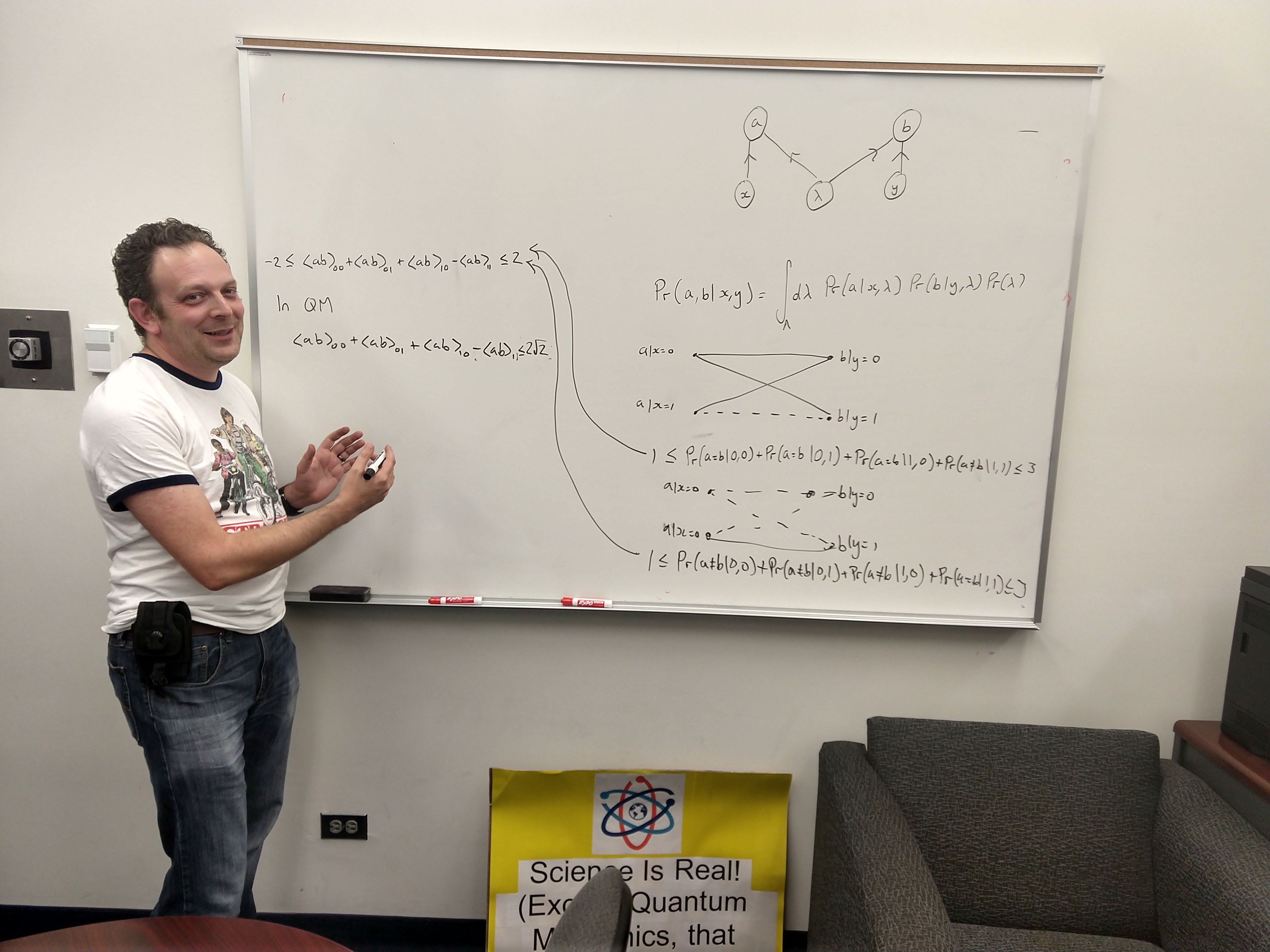Dr. Leifer's article "Is the Quantum State Real? An Extended Review of ψ-ontology Theorems", Quanta 2014; 3: 67–155, has recently reached the impressive 100 citations in Google Scholar. On the occasion of this achievement, we have contacted Dr. Leifer with a list of questions. He kindly agreed to be interviewed and provided his answers for the readers of Quanta.
Q1: What do you think about quantum mechanics? A1: Quantum mechanics is both the most beautiful and annoying theory in physics. The mathematical formalism is really quite beautiful, especially when understood in my preferred way as a generalization of probability theory. It is also annoying because any attempt to interpret it in a straightforward way turns out to be much more subtle than you might expect. There is still no universal agreement on what its fundamental physical principles are or on what it tells us about the nature of reality. Given a century of trying, you might have hoped that we would have made more progress on these fundamental issues. Q2: What is your favorite subject: physics or mathematics? A2: I think the strict divisions between subjects are somewhat arbitrary human constructions. The questions I am interested in lie somewhere on the boundaries between physics, mathematics, and philosophy. They are always motivated by trying to gain a deeper understanding of the physics though, so I guess that makes me a physicist. Q3: At what age did you decide to become a physicist? A3: It is difficult to identify an exact age because there were many events that led to the decision. One that sticks in my mind is when my science teacher gave me a detention for talking in class at about age 13. During that detention, he explained Fermat's principle to me, i.e. that light rays travel between two points via the path that takes the shortest time. I had always been fascinated by optics as a kid. I remember playing with my Dad's magnifying glass and looking at the image change from upright to inverted as I moved it back and forth, and looking at what happens with the reflection of your reflection when you have two mirrors. The fact that all of the phenomena I was curious about could be explained by one simple principle greatly impressed me, and that was when I understood the great unifying power of simple physical laws. It was much more appealing than memorizing all the steps of the carbon cycle at any rate. It would be an oversimplification to pin things on this one event though. For example, we briefly had an astronomy club at school and I remember excitedly discussing the life cycle of stars that I had just read about in a book to a friend on the walk home one day, and that was before the optics detention. Also, I believe I read Russell Stanard's "Uncle Albert" books about relativity at about age 11. Many things contributed, but just having natural curiosity about light and optics was probably the main driver behind all of them. Q4: What is the current big problem, which you are working on? A4: In the foundations of quantum theory, the main thing I am thinking about is the nature of fine-tunings. This is where the operational predictions of a theory have some property, e.g. a symmetry, that we can prove cannot hold at the level of reality. Bell's theorem is an example of this. We cannot use entanglement to send superluminal signals, but nonetheless can prove that they must exist in a certain (pretty broad) class of realist models of quantum theory. If signals exist then you would expect to be able to utilize them, but they can be washed out upon averaging if your uncertainty about the fundamental degrees of freedom is set up in a very precise way. Why these parameters should be set in this way is a fine-tuning problem. Similarly, most of the other quantum no-go theorems can be formulated as fine-tunings, including contextuality and the reality of the quantum state. This indicates to me that they all probably have a common origin. There are two options for dealing with fine tunings: find a broader framework in which they do not exist, or explain them as emergent in a deeper theory. I am working on some interpretations and models which try to go for both of these approaches: a new kind of many-worlds theory for the first, and retrocausal models (where future causes can have past effects) for the second. I do not know whether either of these approaches is right, but I think that resolving the fine-tuning issue is the biggest problem in quantum foundations, and we should try some of the less beaten paths in order to do so. Q5: What advice would you give to young minds who are just entering for the first time in the quantum world? A5: Are you sure wouldn't prefer to get a job in finance or real estate? More seriously though, now is a great time to get involved in quantum computing. There are serious industry efforts to build a quantum computer and the demand for quantum computing expertise in business is growing. Given how slow the progress towards scalable quantum computing has been for most of my career, I never expected this to happen so quickly, but it has exploded in the last five years or so. I think we can expect the demand for expertise to continue to grow for at least the next five or ten years. It is a great field to get into if you like both employability and proximity to fundamental questions in physics. It is also a pretty good time to get interested in the foundations of quantum theory. The number of Ph.D. and postdoc positions in the field has grown quite rapidly over the last decade or so, on the back of the quantum computing revolution. It is still extremely tough to get faculty positions, more so than in most fields of physics. So, if you want to pursue this, you have to do it for the passion and you have to have a plan B. By this I mean not just having the vague thought that you might go into finance or IT, but really researching career options to find something you would actually be happy doing if you had to, and finding out what it takes to get a job in that field. To do great research in quantum foundations, you have to be fearless about attacking the most interesting and difficult questions, and you cannot do that if your meal ticket relies on getting large numbers of publications in a fashionable fields. Knowing that you have a sound backup plan that you would actually be prepared to pull the trigger on really helps with that fearlessness. Believe me, I almost quit academia several times and was very lucky to eventually land a job at Chapman. If you do want to go into foundations then there is an abysmal lack of textbooks that take anything like a modern approach to the subject. The videos from the Perimeter Institute course on the subject are a good place to start. Mine can be found here: PIRSA:C16043. Matthew Saul Leifer earned his B.Sc. in Theoretical Physics from University of Manchester, UK in 1999, M.A.S. in Mathematics from University of Cambridge, UK in 2000 and Ph.D. in Applied Mathematics from University of Bristol, UK in 2003. He has been Research Assistant in Quantum Information Theory at the School of Mathematics, University of Bristol (2003), Postdoctoral Fellow in Quantum Information Theory and Quantum Foundations at Perimeter Institute for Theoretical Physics, Waterloo, Ontario, Canada (2004-2006), Research Associate in Quantum Information Theory and Quantum Foundations at the Centre for Quantum Computing, Department of Applied Mathematics and Theoretical Physics, University of Cambridge (2006-2007), Associate Postdoctoral Fellow in Quantum Foundations at Perimeter Institute for Theoretical Physics (2007-2008), Postdoctoral Fellow in Quantum Information Theory at the Institute for Quantum Computing/Department of Applied Mathematics, University of Waterloo, Ontario, Canada (2007-2008), Part Time Research Associate at the Department of Physics and Astronomy, University College London, UK (2010-2011), and Long Term Visitor at Perimeter Institute for Theoretical Physics (2013-2015). Dr. Leifer is currently an Assistant Professor at the Schmid College of Science and Technology, Chapman University, Orange, California, USA. He has published over 45 research articles in world-renowned journals such as Physical Review Letters, Physical Review A, Proceedings of the Royal Society of London A, and Annals of Physics. |


